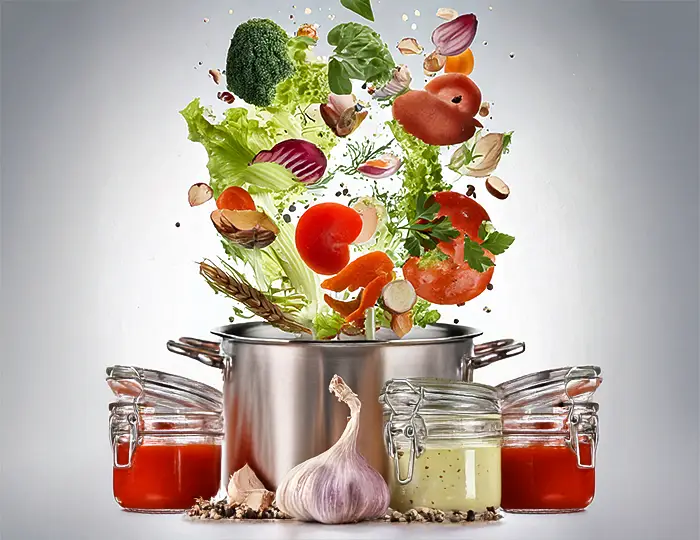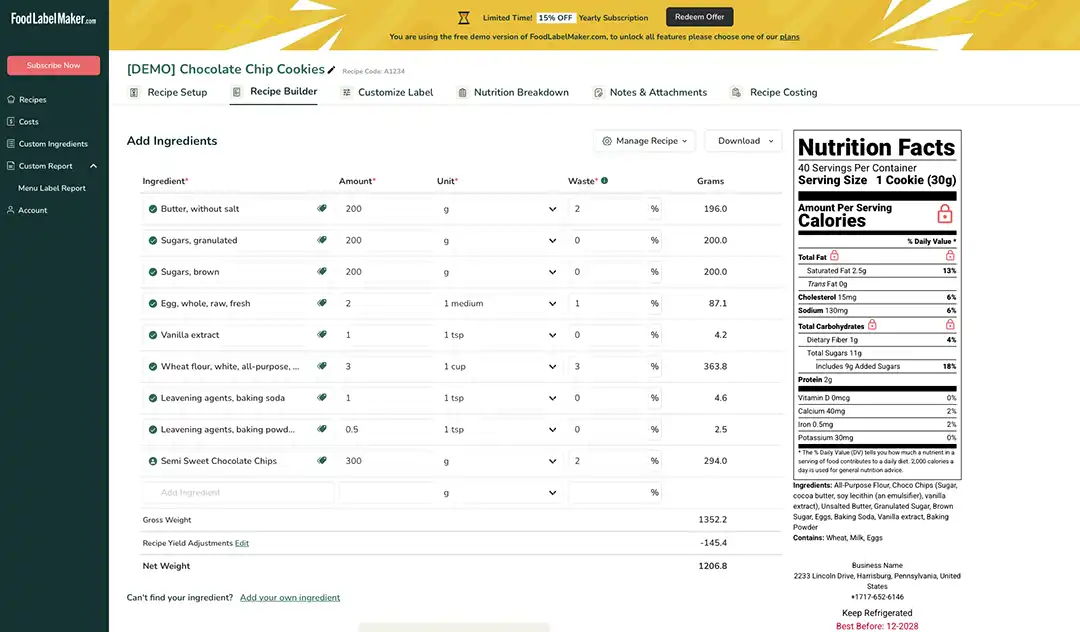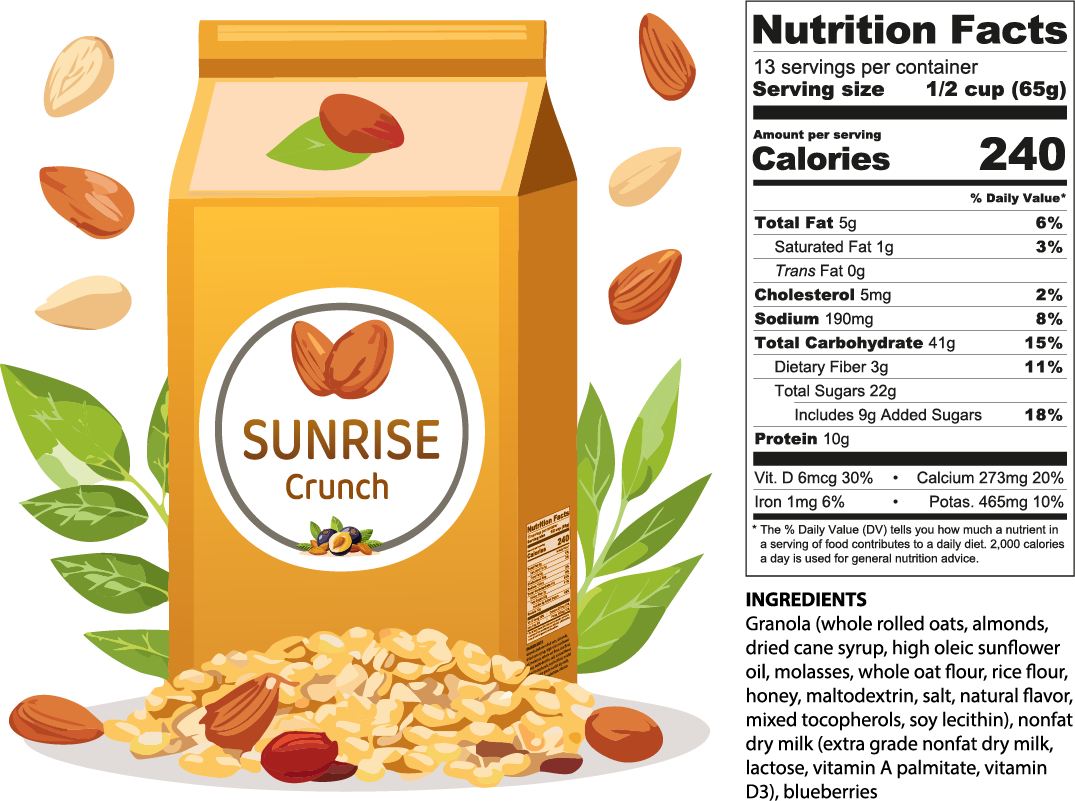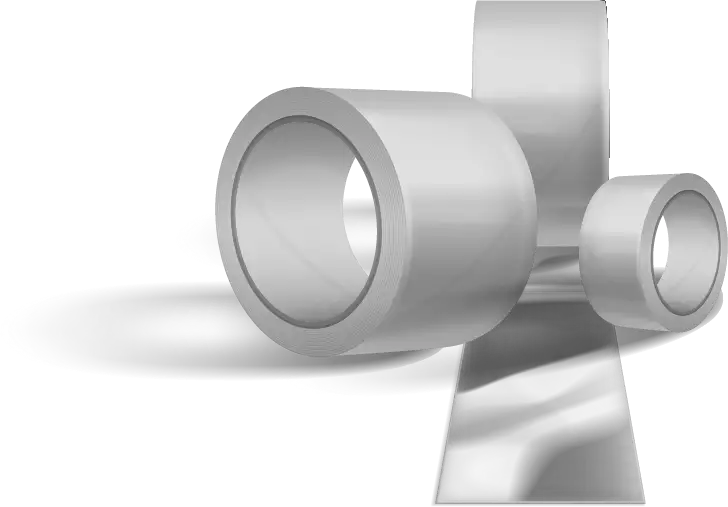Need help? We’re here!
Our expert customer service team is ready to help you with any questions or concerns you may have. Real time help is available Monday through Friday 9AM - 6PM EST- (888) 391-7165
- Chat live with support
- support@sheetlabels.com

Feeling overwhelmed or anxious about creating nutrition labels for your homemade foods? You’re not alone.
Many DIY food entrepreneurs and small businesses worry about compliance, accuracy, and customer trust—but even a small mistake could severely impact your business. Thankfully, producing accurate and professional nutrition labels doesn’t have to be complicated. This easy-to-follow guide will help you avoid common pitfalls and confidently create your labels.
Butterfly Bakery in New Jersey learned a painful lesson in 2013 when FDA inspectors found their “sugar-free” baked goods contained up to three times the sugar claimed on their labels. This mislabeling resulted in an FDA shutdown, expensive recalls, public backlash, and major financial losses. After significantly revamping their labeling procedures and ensuring strict accuracy, Butterfly Bakery regained customer trust and stabilized its operations. Their experience highlights that precise nutrition labeling is not just good practice—it’s essential for business success.
Important Update: This guide follows the latest FDA nutrition labeling requirements (effective since 2021), including mandatory disclosure of nutrients such as Vitamin D, Calcium, Iron, and Potassium. Ensuring these elements are clearly displayed keeps your labels compliant, professional, and trusted by customers.
Listing your ingredients accurately isn’t just legally required; it’s crucial to building trust with your customers.
Example: Ingredients for homemade granola bars: oats, almonds, honey, dried cranberries, coconut oil, vanilla extract, sea salt.
Tip: Always list ingredients by descending weight (heaviest ingredient first).
Accurate nutritional calculations protect your customers and your brand. There are online nutrition label generators out there, but keep in mind many require paid subscriptions or may not guarantee accuracy. Our approach gives you control and knowledge to do it correctly.
We tested several free label creators and we can’t recommend any of them. Some of them are offered by well-meaning big box label companies and others by ambitious developers. They aren’t adequately maintained and can expose you to risk for non-compliance.
Next we poured over stock image sites to see what templates were available. It's a mixed bag. Templates that looked editable were not. We found several where even though the text could be edited strange formatting issues emerged. To save you the headache of sifting through the good, the bad, and the ugly, we went ahead and created a free nutritional facts label template for you. The download link is below. While you'll have to take care to enter the correct information and double-check your calculations, it'll get you off to a strong start.
Finally, we tested several commercial online food calculators and nutritional label designers. We are not affiliated with any of these solutions, but we were quite happy with the options.

Here our recommended online food calculators/food label designers:
Example: If your granola batch totals 3,120 calories and produces 13 servings, each serving is 240 calories.
Accuracy Checklist:
Clearly define practical serving sizes. Incorrect serving sizes can undermine consumer trust and regulatory compliance.
Example: Clearly state that if a batch makes 13, 1/2 cup servings, each serving is a “1/2 cup.”
Precision in serving size maintains customer trust and avoids confusion.

 Official FDA Guidance 18:49
Official FDA Guidance 18:49Learn the essentials of reading and understanding nutrition facts labels with this official FDA guidance video. While a bit technical, it provides valuable information for food entrepreneurs.
Following this list simplifies compliance and enhances customer trust.
FDA regulations recommend Helvetica or Arial fonts, with minimum sizes for readability and professionalism. Here’s a handy reference created by the FDA that lays out the specific fonts and size requirements for nutrition facts labels.

Download our free comprehensive template package containing:
FDA-compliant designs with editable text layers and proper formatting
ZIP file (2MB) • Includes all formats
In addition to our template, you can use these online label design tools:
Food Label Maker (Premium, customizable)
These errors can lead to compliance issues and customer mistrust:
Q: Do homemade foods always require nutrition labels?
A: Usually yes, particularly if you sell commercially or across state lines.
Q: Which fonts are required for FDA-compliant labels?
A: FDA recommends Helvetica or Arial, 6-point size or larger.
Q: What common labeling mistakes should small businesses avoid?
A: Miscalculations, inaccurate serving sizes, omitting allergen warnings, and illegible fonts.
Ready to effortlessly create professional, FDA-compliant nutrition labels?
Browse Our Blank Nutrition Labels Now, or Contact Us for personalized assistance and free label samples.

Creating accurate nutrition labels for your homemade food products doesn’t have to be complicated. With careful attention to detail and the right resources, you can confidently meet FDA guidelines, strengthen customer trust, and set your business up for lasting success